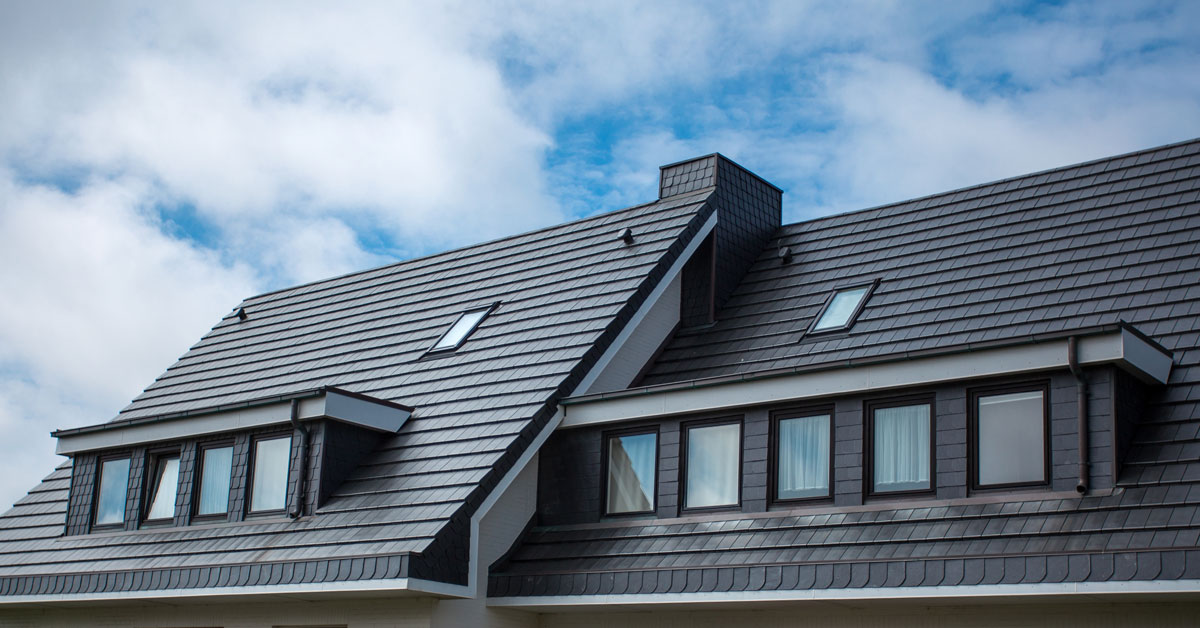Examining the Solutions Supplied by Roofing Companies in Gainesville Florida
Wiki Article
Ideal Practices for Ensuring Correct Roof Ventilation
Guaranteeing correct roof air flow is essential for the longevity and performance of a roofing system. A balanced intake and exhaust air vent proportion, typically 1:300, plays a crucial function, with intake vents preferably placed at the reduced edge of the roofing for amazing air entry and exhaust vents at the peak for cozy air departure. Regular assessments to recognize blockages and keep clear air flow are paramount. Maintaining insulation away from vents is essential to stop air flow constraint. Comprehending these foundational elements sets the stage for more in-depth insights right into installment and maintenance techniques that can considerably improve your roof's efficiency.Understand Air Flow Basics
Correctly recognizing ventilation fundamentals is crucial for ensuring the durability and efficiency of roof. Efficient ventilation minimizes dampness buildup and temperature level extremes in the attic, both of which can bring about considerable architectural damage in time. A well-ventilated roofing assists in stopping usual problems such as mold development, timber rot, and ice dams, which can endanger the honesty of the roofing materials and the underlying structures.The primary objective of ventilation is to assist in the movement of air, allowing for a consistent exchange between the exterior and interior settings. This equilibrium is attained through a combination of consumption and exhaust vents that work together to maintain optimal air flow. Consumption vents, commonly located along the soffits or eaves, allow fresh air to get in the attic area, while exhaust vents, commonly positioned at or near the roofing ridge, enable warm, damp air to get away.
Secret elements affecting the performance of roof ventilation consist of appropriate positioning, appropriate sizing, and making sure that both intake and exhaust vents are unblocked. Routine evaluation and upkeep are essential to identify prospective obstructions, damages, or ineffectiveness in the ventilation system, therefore safeguarding the roof's efficiency and durability.
Kinds of Roof Covering Vents
Roof covering vents play an important duty in maintaining efficient attic room air flow and, by extension, the total wellness of the roof system. Various types of roofing vents are offered, each with one-of-a-kind advantages customized to specific roof needs.
Soffit vents are installed under the eaves and operate in tandem with roof covering vents to make sure a balanced consumption and exhaust system. By enabling cooler air to enter from below, soffit vents promote the expulsion of warm air through top vents. Gable vents, situated on the outside wall surfaces of the attic, offer another efficient remedy, especially in homes with saddleback roofs.
Evaluate Your Existing Ventilation

Next, Homepage take into consideration the age and condition of your roof covering materials and ventilation elements. Older systems might not adhere to present building regulations or may have worn away gradually, decreasing their effectiveness. Conduct an extensive examination to identify any type of signs of deterioration, such as rust, damage, or spaces that can jeopardize the system's efficiency.
Furthermore, determine the attic room temperature and moisture levels. High temperatures and humidity can show poor air flow.
Installation Best Practices
Efficient installation of roofing ventilation systems is extremely important for guaranteeing ideal performance and durability. Correct setup begins with comprehending the details ventilation demands of the building and the roof it covers. This includes determining the right ratio of consumption to exhaust vents, normally sticking to the 1:300 guideline, which specifies one square foot of ventilation for every single 300 square feet of attic floor space.
Consumption vents ought to be set up at the roof's lower side, typically in the soffits, to permit cool air to get in. Exhaust vents, on the other hand, must be mounted near or at the roof's optimal to help with the departure of cozy, moist air.
Seal all air vent connections carefully to stop air leaks and prospective water seepage. Usage top notch materials and comply with maker standards to make certain longevity and effectiveness. Additionally, integrating ridge vents with baffles can dramatically enhance airflow effectiveness by stopping wind-driven rain and snow from entering the attic.
Ultimately, exact setup of roof air flow systems minimizes potential problems such as mold development, ice dams, and architectural damages, making sure the roof's integrity and the building's overall wellness.
Routine Maintenance Tips
Consistency in upkeep practices is basic to guaranteeing the long-term performance of roofing ventilation systems. Throughout these inspections, guarantee that vents are free of particles, nests, and other blockages that might impede air movement.
Utilize a soft brush or a vacuum cleaner to remove dirt and debris from intake and exhaust vents. Be mindful not to damage the air vent screens or louvers throughout the process.
Appropriate insulation is similarly crucial. Make certain that attic insulation does not block the vents, as this can significantly limit airflow. If any type of insulation has actually shifted or settled, reposition or replace it to maintain an efficient obstacle.
Last but not least, replace any harmed or missing elements promptly. Damaged vents, fractured roof shingles, or shabby flashing can all add to insufficient ventilation and must be addressed immediately. Routine maintenance guarantees that the roof ventilation system operates efficiently, consequently expanding the life-span of the roofing itself.
Conclusion
Making sure proper roof air flow is extremely important for preserving the performance and sturdiness of a roof system. Adherence to the 1:300 intake and exhaust air vent ratio, combined with the strategic placement of vents, is necessary.A balanced intake and exhaust air vent ratio, generally 1:300, plays a critical duty, with consumption vents this contact form ideally positioned at the lower edge of the roof covering for cool air access and exhaust vents at the top for cozy air leave. Intake vents, usually situated along the eaves or soffits, permit fresh air to get in the attic room space, while exhaust vents, commonly positioned at or near the roof covering ridge, allow warm, click to find out more moist air to run away.
Soffit vents are mounted under the eaves and job in tandem with roof vents to guarantee a well balanced consumption and exhaust system. By enabling cooler air to get in from below, soffit vents promote the expulsion of hot air via top vents. Adherence to the 1:300 intake and exhaust air vent proportion, combined with the tactical placement of vents, is necessary.
Report this wiki page